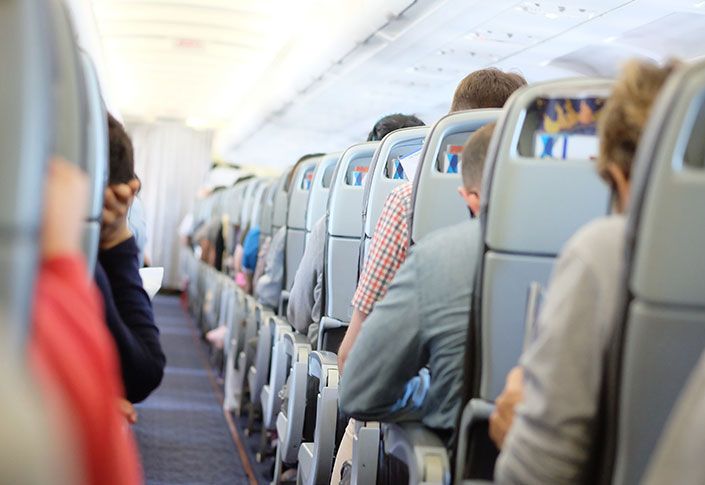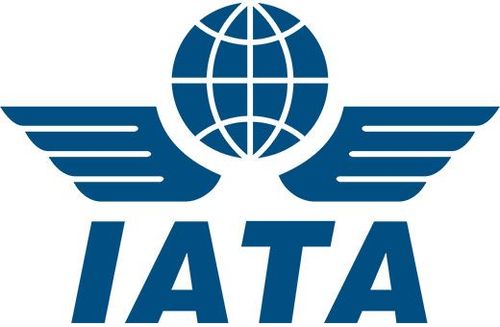Where travel agents earn, learn and save!
News / IATA Calls for Passenger Face Covering and Crew Masks
Yes to the masks, no to social distancing measures

The International Air Transport Association (IATA) supports the wearing of face coverings for passengers and masks for crew while on board aircraft as a critical part of a layered approach to biosecurity to be implemented temporarily when people return to traveling by air. IATA does not support mandating social distancing measures that would leave ‘middle seats’ empty. Evidence suggests that the risk of transmission on board aircraft is low. Mask-wearing by passengers and crew will reduce the already low risk, while avoiding the dramatic cost increases to air travel that onboard social distancing measures would bring.
Measures to Reduce the already low risk of onboard transmission
IATA recommends mandatory face-coverings for passengers and masks for crew as one of several actions to reduce the already low risk of contracting COVID-19 on board aircraft. In addition to face coverings, these layers of temporary biosecurity measures being proposed include: • Temperature screening of passengers, airport workers and travelers, • Boarding and deplaning processes that reduce contact with other passengers or crew, • Limiting movement within the cabin during flight, • More frequent and deeper cabin cleaning; and • Simplified catering procedures that lower crew movement and interaction with passengers. When proven and available at scale, testing for COVID-19 or immunity passports could also be included as temporary biosecurity measures. IATA does not recommend restricting the use of the ‘middle seat’ to create social distancing while onboard aircraft. Evidence, although limited, suggests that, the risk of virus transmission on board aircraft is low even without special measures: • Contact tracing for a flight from China to Canada with a symptomatic COVID-19 passenger revealed no onboard transmission (pdf) • Contact tracing for a flight between China and the US with 12 symptomatic COVID-19 passengers revealed no onboard transmission • Communication with IATA member airlines indicates similar results: - An IATA informal survey of 18 major airlines identified, during January-March 2020, just three episodes of suspected in-flight transmission of COVID-19, all from passengers to crew. A further four episodes were reports of apparent transmission from pilot to pilot, which could have been in-flight or before/after (including layover). There were no instances of suspected passenger-to-passenger transmission. - A more detailed IATA examination of contact tracing of 1,100 passengers (also during the January to March 2020 period) who were confirmed for COVID-19 after air travel revealed no secondary transmission among the more than 100,000 passengers in the same group of flight. Just two possible cases were found amongst crew members. There are several plausible reasons why COVID-19, which is spread primarily by respiratory droplets, has not resulted in more on-board transmission, and is different from other modes of public transport: • Passengers face forward with limited face-to-face interactions • Seats provide a barrier to transmission forward to aft in the cabin • Air flow from ceiling to floor further reduces the potential for transmission forward or aft in the cabin, moreover, air flow rates are high and not conducive to droplet spread in the same way as in other indoor environments • High Efficiency Particulate Air (HEPA) filters on modern aircraft clean cabin air to operating theatre quality, further assisted by high levels of fresh air circulation Moreover, even if implemented keeping the ‘middle seat’ open will not provide the recommended separation for social distancing to be effective. Most authorities recommend 1m-2m while the average seat width is less than 50 cm. The long-term solutions for COVID-19 depend on medical science.
Economic Impact
Calls for social distancing measures on aircraft would fundamentally shift the economics of aviation by slashing the maximum load factor to 62%. That is well below the average industry breakeven load factor of 77%. With fewer seats to sell, unit costs would rise sharply. Compared to 2019, air fares would need to go up dramatically—between 43% and 54% depending on the region—just to break even.  For more information, please visit iata.org
For more information, please visit iata.org
More Travel News: Dubai Expo 2020 delayed to October 2021 ABTA: Furlough scheme must be extended to save jobs CHTA says delayed payment from tour operators could mean resort closures Virgin Atlantic to cut 3,000 jobs and quit Gatwick










